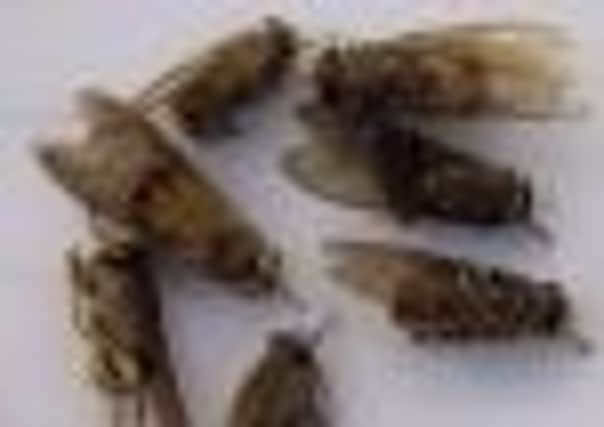Tsetse fly breakthrough made by Dundee company


• Dundee company make breakthrough in battle to eradicate disease-carrying tsetse flies
• Tsetse flies carry potentially deadly ‘sleeping sickness’ disease
Advertisement
Hide AdAdvertisement
Hide Ad• Iatros Ltd has developed device to eradicate viruses in blood products
• Bid to sterilise flies was being undermined by cows carrying infected blood
Human African trpanosomiasis - commonly known as sleeping sickness - is caused by a single-celled parasite called a trypanosome which is transmitted by the bite of the deadly fly.
The International Atomic Energy Authority (IAEA), based in Vienna, is trying to help defeat the disease by sterilising millions of male tsetse flies in their laboratories before they are released into the wild to breed unsuccessfully.
The flies are fed on bovine blood from African cows before being released and a large percentage of the sterilised flies are dying from infected blood before they can be released.
But, in a major boost for the eradication campaign, Iatros Ltd, a Dundee-based company which specialises in using UV light technology to kill viruses and bacteria in blood products, has developed a device which eradicates infection from the cow blood before it is fed to the tsetse fly.
The first device is about to be shipped to the African state of Burkina Faso. And other devices are expected to be ordered as the fight to eradicate the blood sucking fly intensifies.
David Mowat, the managing director of Iatros, said the company, which employs a staff of only five people at its offices at the Dundee Technology Park, had been approached by the IAEA about helping solving the problem of the death rate amongst the sterilised flies.
Advertisement
Hide AdAdvertisement
Hide AdHe said: “We have already developed the technology which inactivates viruses and bacteria in blood and blood products. especially human plasma products. And we were approached by the IAEA who had this problem of trying to clean the blood which they feed to tsetse flies in their centres in Africa before releasing them, having been sterilised, into the wild to colonise and therefore reduce the tsetse fly population.
“The sterilised tsetse flies are being fed blood from slaughtered cows before being released. But, because of the method of slaughter and the fact that African cows are not guaranteed to be infection free, the sterilised flies, whose immune system was also compromised, were feeding on infected blood.
“The flies were picking up infection from the blood and they were keeling over before they could be released into the wild.”
The infected blood problem, said Mr Mowat, had been made more acute because tsetse flies only feed on blood and cannot survive on artificial or substitute products.
He continued: “After a six year development programme we have developed a machine that cleans the blood before it is fed to the tsetse flies. And we have now supplied to the first device to the IAEA which we hope will be the first in a substantial number of orders.
“It will ensure the tsetse flies will survive to go into the wild and, if they breed unsuccessfully, they will overwhelm the population.”
Dr Andrew Gunn, the company’s scientific director, said the potential benefit to Africa from the programme was “almost unbelievable.”
According to the IAEA, the deadly tsetse affects as many as 500,000 people, 80 per cent of whom eventually die.
Advertisement
Hide AdAdvertisement
Hide AdA spokesman said: “The tsetse fly has turned much of the fertile African landscape into an uninhabited green desert, spreading sleeping sickness and killing three million livestock animals every year. Despite various drastic efforts over the past 100 years to eradicate the tsetse fly, most of the time it has recovered. The tsetse, about the size of a house fly, infests 37 sub-Saharan African countries - 32 of them among the 42 most Heavily Indebted Poor Countries in the world. Much of Africa’s best land - particularly in river valleys and moist areas, where the potential for mixed farming is good - lies uncultivated, while tsetse-free areas face collapse from overuse by humans.”